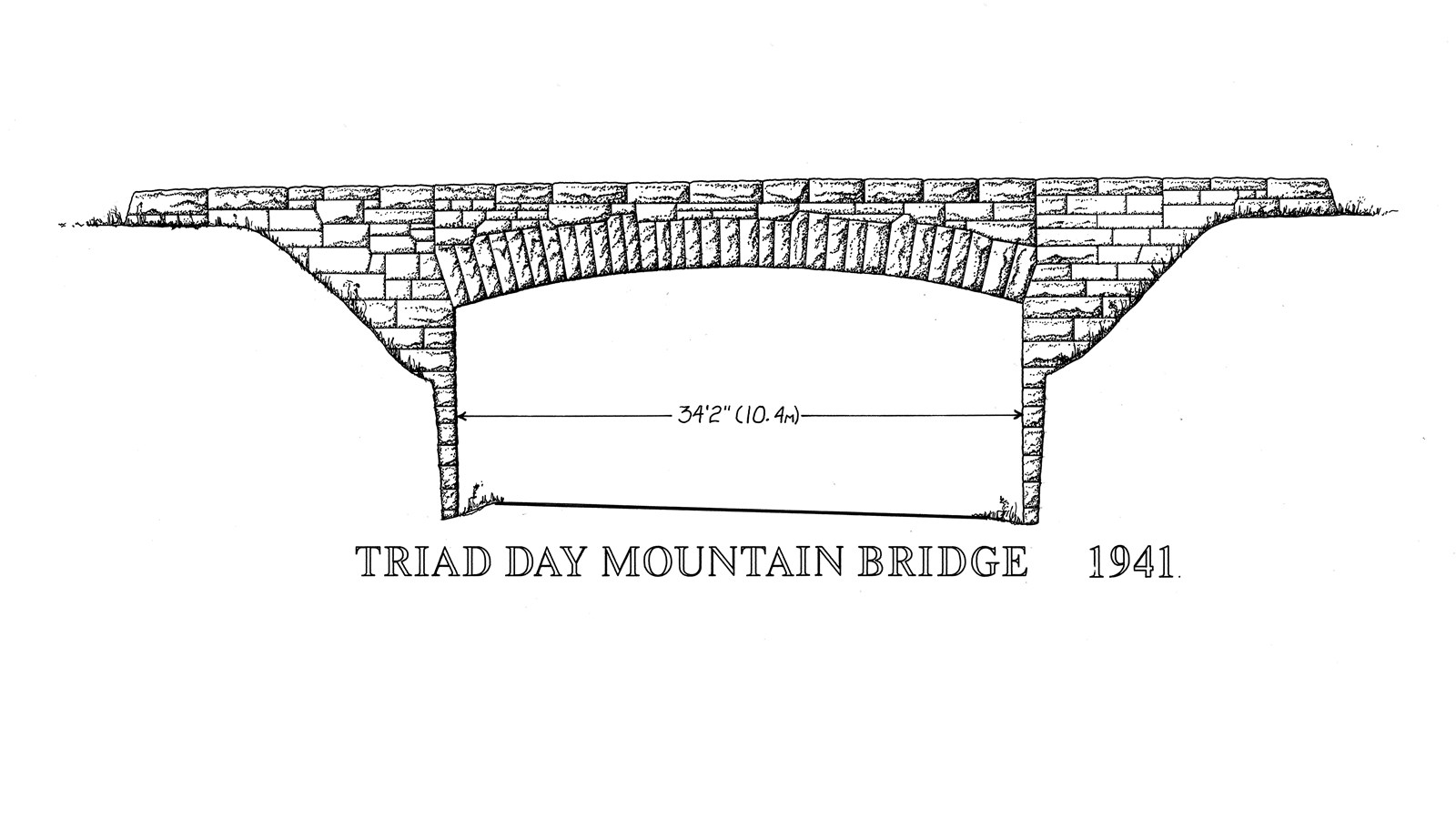Last updated: October 10, 2024
Place
Triad-Day Mountain Bridge

Historic American Engineering Record, National Park Service, David Haney, 1994
Scenic View/Photo Spot
Triad-Day Mountain Bridge (1940) was the 17th and final bridge constructed along 57 miles of carriage road on Mount Desert Island between 1917 and 1940. It spans the Day Mountain Motor Road and serves as a connection between the Bubble Pond carriage road to the north and the Barr Hill-Day Mountain and Day Mountain Loop carriage roads to the south.
It was built by the National Park Service, after John D. Rockefeller, Jr. granted a right-of-way. By this time, Rockefeller was in the process of transferring vast portions of his land and the carriage roads to the National Park Service. Its design was reminiscent of the earlier Rockefeller bridges, and especially the Stoughton’s Jordan Pond Road Bridge.
Constructed of reinforced concrete, it is 74 feet 6 inches long, and 20 feet 6 inches at the highest point, and clad with quarry-faced, random-coursed, pink granite ashlar, including the underside of the arch.
The segmental arch spans 34-feet 8-inches and has slender radiating voussoirs of slightly varying dimensions. The flat parapet walls are topped with large squared granite capstones. The motor road is flanked by stepped masonry retaining walls on both sides of the bridge.
